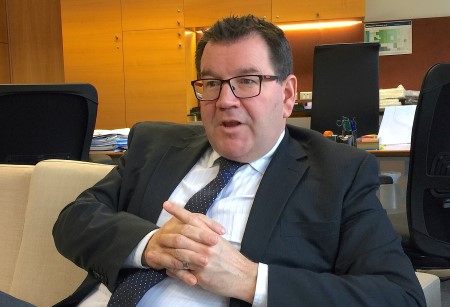- Labour-led government to raise social spending, scrap tax cuts
- Gov't forecasts NZ$2.54 bln surplus in 2017/18
- Gov't forecasts 3.3 pct GDP in 2017/18
WELLINGTON, Dec 14 (Reuters) - New Zealand's new Labour-led government on Thursday flagged higher spending on families and a commitment to boosting housing supply as it scrapped tax cuts proposed by the previous administration, and targeted a smaller surplus for next year.
The twice-a-year economic and fiscal update was the first for Labour since it took the helm in October, ending nine years of centre-right National Party rule.
Putting housing and employment at the heart of its political agenda, Labour campaigned on a bid to make the economy work for its people, taking aim at a red-hot property market that had priced out many first-home buyers.
Unveiling the half-year budget update, Finance Minister Grant Robertson said the government expects to post a slightly lower-than-forecast budget surplus in 2018 as it pours money into housing and social services.
Labour's plans to curb demand in housing by banning foreign buyers of existing homes and expanding taxes on investment properties had also led many economists to forecast home prices would drop in the next year.
The government predicted a NZ$2.54 billion surplus in the year to June versus Treasury's prior forecast of NZ$2.86 billion in its August pre-election economic and fiscal update.
It plans to spend NZ$32.9 billion from its capital spending budget across the next four years, rising from the proposed NZ$26.2 billion in the August update.
Robertson said the government will increase social spending aimed at families with children, improve housing supply and re-start government contributions to the country's pension fund.
"This is a government that is not satisfied with the status quo. This is a government that believes that we do need to do some things differently in order to establish a sustainable and inclusive economy," Robertson said in a speech at Parliament.
Labour's boost in spending was largely covered by scrapping the previous government's planned tax cuts, which were due to kick in next April.
The remaining shortfall was mostly accounted for by paying back government debt at a slower rate with Treasury forecasts showing net debt at 21.7 percent of GDP in the year to June 2018, compared to 22 percent in the August update.
Treasury also predicted slightly lower budget surpluses than forecast under National for the next three years, but expected a pick up in 2021.
TRANSITION PERIOD FOR GDP The Treasury cut its forecast economic growth to 3.3 percent in the year to June 2018 and 3.4 percent the following year, compared to the predicted 3.5 percent growth for each year in the August forecast.
Longer term, Treasury expected the government spending would help lift economic growth as more money flowed through the economy, and predicted higher GDP for 2020 and 2021 than in August's forecasts.
"We are in a transition period in the economy. We want to move away from growth that is driven by population growth and housing speculation," Robertson said.
New Zealand's robust growth has been the envy of the developed years in recent years, but the economy has hit headwinds in recent months.
Growth has eased due to tighter capacity in the previously booming construction sector, a slowing housing market and lower prices for dairy, the country's main goods export.
Robertson reiterated Labour was committed to reducing government debt to 20 percent of GDP by 2022, two years later than planned under National.
- Forums
- NZX - General
- News: NZ gov't unveils plans to boost spending, sees slightly lower budget surplus








